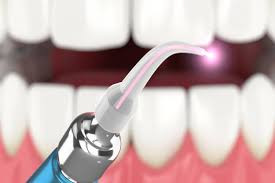views
The dental lasers market has gained notable traction in recent years, offering innovative solutions that promise less invasive, more precise, and faster dental procedures. With applications ranging from soft tissue surgery and periodontal treatments to teeth whitening and cavity removal, dental lasers are gradually becoming an essential tool in modern dentistry. However, despite these advancements, the market continues to face several hindrances that restrict its full-scale integration across dental practices globally. These obstacles span financial, educational, technological, and regulatory domains and must be addressed for the market to unlock its long-term potential.

High Equipment Costs Restrict Adoption
One of the foremost hindrances affecting the dental lasers market is the high cost of laser systems. Advanced models, especially those offering multi-functional capabilities for both soft and hard tissue procedures, require significant upfront investment. This capital expense makes it difficult for smaller dental practices, particularly in emerging markets, to afford such technologies. Additionally, recurring maintenance costs, service contracts, and equipment calibration add to the financial burden, discouraging potential buyers and limiting market expansion.
Limited Access to Training and Certification
Dental lasers require specialized skills and knowledge for safe and effective use. Unfortunately, access to comprehensive training programs remains limited in many regions. While some dental institutions have begun incorporating laser dentistry into their curricula, the majority still lack structured education in this field. Continuing education options are often expensive, time-consuming, or geographically inaccessible, leaving many practicing dentists underprepared. This training gap not only affects the safe application of the technology but also slows down its adoption rate within general practice settings.
Inconsistent Regulatory Standards Across Countries
Regulatory hurdles are another major hindrance to the dental lasers market. Different countries follow varied protocols for the approval, classification, and usage of dental laser devices. These inconsistencies create confusion among manufacturers and practitioners and make it difficult to enter multiple markets simultaneously. Without universal standards, even well-established companies must undergo separate compliance processes for each region, increasing costs and delaying time to market. Moreover, in countries with limited regulatory oversight, the lack of standardization can compromise device quality and user confidence.
Lack of Insurance Coverage for Laser Procedures
A significant deterrent for both providers and patients is the lack of insurance reimbursement for laser-based dental treatments. Most dental insurance plans do not cover procedures performed with lasers or classify them as elective or cosmetic, thereby placing the financial burden entirely on patients. This issue is particularly prominent in markets where out-of-pocket healthcare spending is limited. Without insurance support, patients are less likely to opt for laser procedures, even when they are clinically beneficial, which ultimately disincentivizes providers from investing in laser technology.
Low Patient Awareness and Demand
While patients increasingly seek less invasive and more comfortable dental treatments, general awareness about the benefits of laser dentistry remains low. Many individuals are unfamiliar with what dental lasers can offer, such as reduced bleeding, faster recovery times, and improved outcomes for certain procedures. Others may even hold misconceptions, associating the word "laser" with high cost or risk. This lack of patient-driven demand limits market momentum, as practitioners are less likely to adopt technologies that are not requested or valued by their clientele.
Technological Limitations in Complex Procedures
Despite advancements in laser technology, there are still limitations in its application for certain complex dental procedures. For example, while lasers are highly effective for soft tissue operations, they may not be as efficient for cutting hard tissues like enamel or bone. In such cases, dentists must rely on traditional rotary instruments, reducing the value proposition of an all-in-one laser system. These limitations create workflow inefficiencies and can prevent clinics from fully committing to laser-based solutions.
Resistance to Change in Established Practices
Many dental practitioners have long-standing workflows and clinical habits that are rooted in traditional tools and procedures. The introduction of laser systems requires changes in practice dynamics, patient management, and clinical technique. For some dentists, particularly those nearing the end of their careers, the return on investment or the perceived learning curve may not justify the shift. This resistance to change is a subtle yet powerful hindrance that slows the rate at which laser technologies are adopted industry-wide.
Fragmented Market and Product Differentiation Issues
The dental lasers market is fragmented, with numerous manufacturers offering a variety of products across a wide price and performance spectrum. While this promotes innovation, it also creates challenges in product differentiation. Dental professionals may struggle to identify the most suitable device for their needs due to overlapping features, inconsistent specifications, or a lack of reliable comparative data. This confusion often leads to indecision or suboptimal purchasing decisions, further hindering market growth.
Conclusion
Although the dental lasers market holds immense promise for revolutionizing dental care, its growth and integration face several significant hindrances. Financial barriers, limited training infrastructure, fragmented regulations, and low patient awareness all contribute to a slower-than-expected market trajectory. Addressing these issues requires a collaborative approach from stakeholders, including manufacturers, educators, insurers, and policymakers. Only by overcoming these systemic challenges can dental lasers transition from niche innovation to standard practice, ultimately benefiting both providers and patients on a global scale.













![¿Cómo puedo contactar con una persona en vivo en los vuelos de Frontier? [Guía paso a paso]](https://timessquarereporter.com/public/index.php/upload/media/posts/2025-06/12/como-puedo-contactar-con-una-persona-en-vivo-en-los-vuelos-de-frontier-guia-paso-a-paso_1749705127-s.jpg)


![How Do I Get to a Live Person at Frontier Flights? [Step-by-Step Guide]](https://timessquarereporter.com/public/index.php/upload/media/posts/2025-06/12/how-do-i-get-to-a-live-person-at-frontier-flights-step-by-step-guide_1749705004-s.jpg)





Comments
0 comment